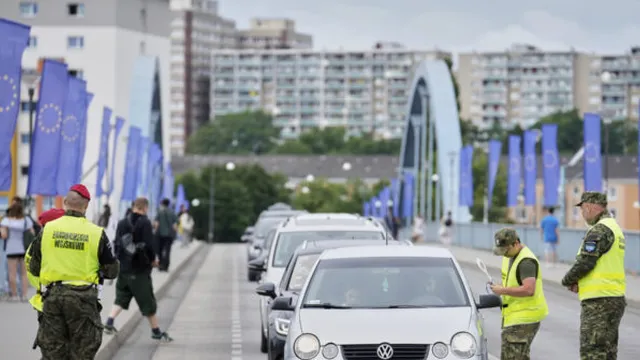
Poland reinstates border controls amid immigration crisis
2025-07-07 15:23- Poland's government has reintroduced border checks with Germany and Lithuania to combat illegal migration.
- The controls will be enforced at 52 points on the German border and 13 on the Lithuanian border, initially for 30 days.
- This move indicates a strategic shift to bolster national security amid rising pressure from domestic far-right groups.
Express your sentiment!
Insights
Poland has reinstated border controls with Germany and Lithuania effective Monday, July 7, 2025, triggered by rising concerns over illegal migration. The Polish government, led by Prime Minister Donald Tusk, implemented these measures after mounting pressure from far-right groups alleging that Germany was facilitating the transportation of migrants into Polish territory. The restrictions include checks at 52 crossing points along the German border and 13 points along the Lithuanian border, slated to last for at least 30 days. This move follows Germany's previous implementation of stricter controls at its own borders to tackle the influx of asylum-seekers. The border controls reflect a significant shift in Poland's immigration policy as the government seeks to balance its commitment to the Schengen agreement, which allows for free movement within the EU, with rising domestic pressures regarding migration. Since the new German Chancellor Friedrich Merz took office in May 2025, he has enforced tougher immigration policies aimed at turning away asylum-seekers attempting to cross into Germany. Polish authorities echoed these concerns, with Interior Minister Tomasz Siemoniak emphasizing that illegal migration is a crime that requires stringent enforcement. The reintroduction of border checks has unleashed a wave of criticisms and concerns regarding the potential strain on both migratory populations and the Schengen area's principles. The situation has sparked fears of creating a ping-pong effect, where migrants are turned back and forth between Germany and Poland without a stable resolution. Police unions and various civil organizations have raised alarms about the escalation of tensions at the border and how these checks might disrupt day-to-day life for citizens of both nations. Furthermore, the Polish government has expressed dissatisfaction with citizen-led patrols that have emerged to pressure officials into enhancing border security. The rise of vigilante groups has prompted government officials to reaffirm their commitment to regulated border controls, stating that such actions by civilians can obscure the responsibilities of the national border police. As the EU grapples with internal migration issues, Poland's strategy could set a precedent for other member states facing similar challenges, leading to a reevaluation of the balance between national sovereignty and shared European commitments.
Contexts
The Schengen Area, established in the late 20th century, represents one of the most significant achievements in European integration. Its primary objective is the removal of internal borders between participating states to allow for free movement of people, enhancing cooperation among member countries. Border controls have been replaced with uniform external borders, where entry requirements are maintained and enforced. As of now, the Schengen Area consists of 26 European countries, which have agreed to uphold common external border policies while allowing passport-free travel within their territories. This framework is essential for the promotion of social and economic interactions, supporting both tourism and trade in the region. To maintain the integrity of the Schengen Area, border control regulations are rigorously defined. All member states must implement and adhere to agreed-upon security measures. This includes conducting thorough checks at the external borders to prevent illegal immigration and ensure effective monitoring of goods and security risks. The Schengen Borders Code establishes procedures for border checks and outlines specific criteria for third-country nationals wishing to enter the territory. Additionally, countries are encouraged to share information through the Schengen Information System (SIS), which helps in tracking and managing individuals crossing the borders, thereby enhancing collective security. The management of the Schengen external borders is not solely the responsibility of individual countries. The European Border and Coast Guard Agency (Frontex) plays a crucial role in coordinating and supporting the efforts of member states to secure their borders. This agency provides operational assistance, intelligence sharing, and training for local border authorities. Furthermore, under challenging situations, such as significant migrant influxes or security threats, temporary reinstatement of internal border controls can be authorized, allowing countries to respond effectively. These measures are typically short-term and designed to restore order while maintaining the Schengen commitment to free movement as much as possible. In conclusion, the Schengen Area and its border control regulations symbolize an ambitious undertaking to enhance European cooperation. While challenges remain, including addressing human trafficking, asylum requests, and the need for greater synchronization among member states, the principles of free movement and coordinated external border control have yielded considerable benefits. The balance between security and freedom continues to be a pivotal consideration in ongoing discussions about the future of the Schengen Area and its regulations.